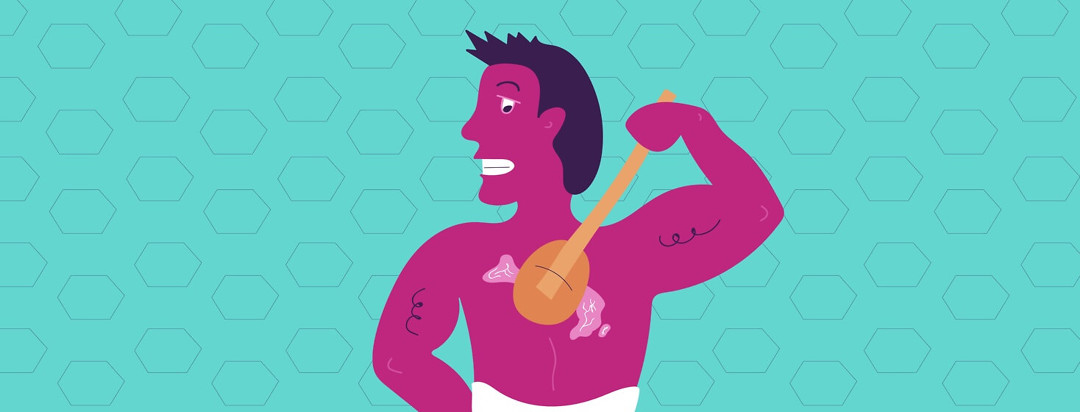Dry Brushing: Good or Bad for Psoriasis?
My wife follows quite a few health and wellness trainers on Instagram. You know—those ridiculously fit, beautiful people that make getting in shape sound like a breeze? Well, at the recommendation of one of these gurus, she bought herself a dry brush for Christmas. She excitedly ripped open the Amazon box chattering about how it helps with exfoliation and circulation.
Exfoliation? My flakey ears perked up.
My skin has been out of control this winter. I have a self-made blizzard following me around. So, the idea of getting rid of some of my extra stuff sounded great! But, like anything to do with my skin, I wanted to investigate it a little further before diving in headfirst. After all, we are all marketed “miracles” daily, so it is good to have a discerning eye.
Dry brushing claims
If you haven’t already googled or came across this thing—its basically looks like a round shower brush with semi-coarse bristles. Nothing fancy or intimidating. Articles from Healthline and similar sites describe it as an Ayurvedic (type of historical, alternative medicine) method of treatment. The first and most appealing benefit (to me, anyways) is skin exfoliation. This is pretty self-explanatory. The bristles help to loosen dead skin cells and leave the skin smoother and more vibrant. Easy enough.
The next claim is that it improves the lymphatic system by promoting better circulation. The key to this is that you must brush from the bottoms of your feet up in a clockwise circular motion. The bristles supposedly open up the pores and allow toxins to be released through body fluid (sweat). This is an interesting theory, but I’ll be honest with my findings: there is little scientific evidence to back it up.
Finally, dry brushing is thought to remove cellulite. I feel like this is something added on to every new health aid in recent years, so I didn’t look further into it. When you are covered in plaques, cellulite is the last thing you are worried about.
Psoriasis precautions
I found multiple warnings stating it was not recommended to use the brush on skin that is cracked or open, as there could be the potential for the development of infections. Some sites specifically said it should not be used on individuals with eczema or psoriasis. It should go without saying, scratching an open wound should always be avoided. Although I couldn’t find any mention of the Koebner phenomenon in relation to dry brushing, my guess is that if the bristles are too coarse, this could be a potential factor as well.
Conclusion about dry brushing for psoriasis
The idea of quickly removing some scales is tempting, but I personally am choosing to hold off trying this method of exfoliation until my flare dies down. Right now, I have way too many cracks in my skin for it to feel like a safe practice. Plus, I don’t know about you, but I don’t like being touched when my skin is inflamed.
If you decide to give this thing a try, I would recommend only using it on parts of your skin that don’t have lesions. Also, it is stressed to keep the brush clean by rinsing it and allowing it to dry between uses, with a deep clean weekly. As with all things skin-related to psoriasis, check with your doctor first about any concerns.

Join the conversation